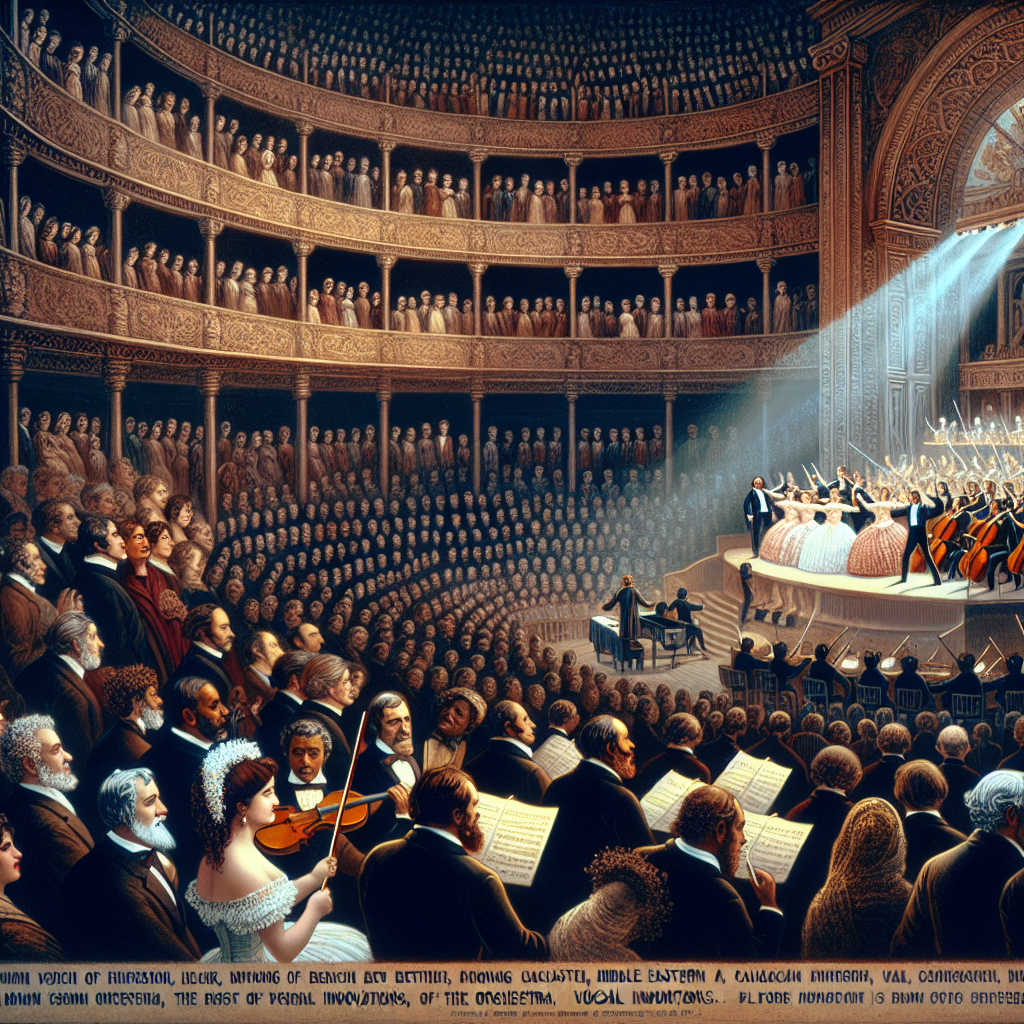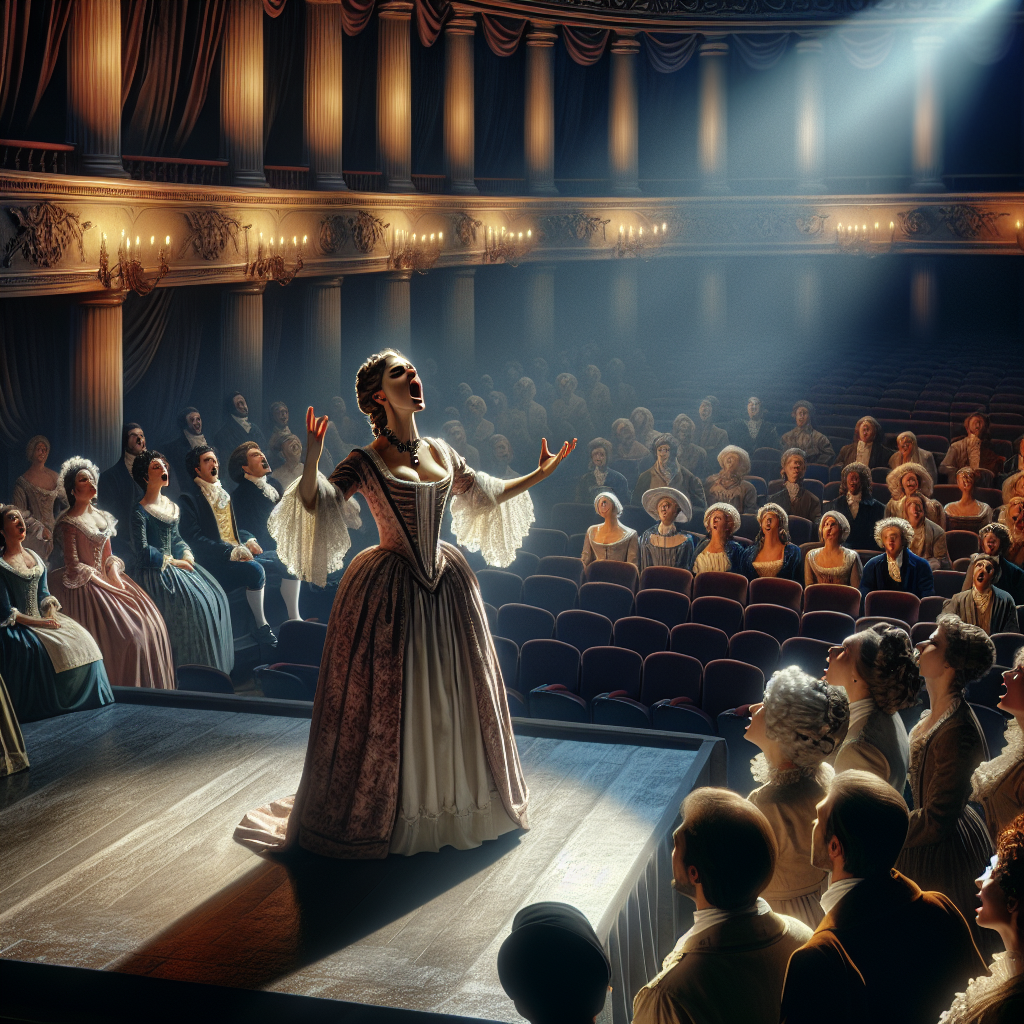
The Dramatic and Vocal Innovations in Beethoven’s Fidelio
Few composers have managed to leave an indelible mark on the world of classical music like Ludwig van Beethoven. As one of the most acclaimed and revolutionary figures in the history of Western art music, Beethoven’s contributions span a broad spectrum, from symphonies to sonatas, concertos to string quartets. Among his immense repertoire, one work stands out for its dramatic and vocal prowess—his only opera, “Fidelio.” Completed over several revisions between 1805 and 1814, “Fidelio” represents not only Beethoven’s genius in orchestration but also his deep commitment to the themes of justice, bravery, and the triumph of human spirit.
This opera, which he himself termed as his “most arduous labor,” combines a gripping narrative with profound musical innovations, encapsulating Beethoven’s unique style. For both seasoned aficionados and newcomers alike, understanding “Fidelio” offers a comprehensive insight into Beethoven’s vocal and choral approach, reflecting his exceptional ability to marry lyrical make-up with dramatic storytelling. As we delve into its history, structure, and thematic elements, it becomes apparent how “Fidelio” intricately weaves together the fabric of Beethoven’s broader vision. This exploration intends to shed light on the magnanimous vocal and choral elements that make “Fidelio” an enduring masterpiece.
Beethoven’s Journey to Opera
Beethoven’s early years were marked by comprehensive training in various musical disciplines, but he was relatively late to venture into opera. Born in 1770 in Bonn, Germany, Beethoven was immersed in a world of music from a young age, thanks to his musician father and the supportive court of Bonn. Despite his early successes, it wasn’t until Napoleon’s reign in the early 19th century that he started contemplating opera seriously. His initial attempts drew inspiration from the prevailing trends in operatic culture, but it was the Enlightenment themes and ideals that profoundly influenced his creative direction.
It is notable that Beethoven wrote “Fidelio” during a period of great political and social upheaval. The Napoleonic Wars were at their height, and the ideals of liberty, fraternity, and equality were omnipresent in Europe. These concepts deeply resonated with Beethoven’s personal ideals and found their way into the narrative structure of “Fidelio.” The lengthy process of composing and revising the opera speaks volumes about Beethoven’s commitment to perfection, ensuring that his work not only resonated with the operatic norms but also transcended them.
The Story and Structure of “Fidelio”
The plot of “Fidelio” is deeply intertwined with themes of love, courage, and justice. The story follows Leonore, who disguises herself as a young man named Fidelio in order to save her husband, Florestan, from political imprisonment. Set in a Spanish prison, the opera builds through dramatic revelations and character dynamics towards a triumphant conclusion where justice prevails, and love conquers all adversities.
The structure of “Fidelio” itself is unorthodox for its time. Unlike the typical three-act opera of the Classical era, Beethoven initially composed “Fidelio” in two acts. This structure was not just a formal innovation but also reflected his unique storytelling approach, which aimed for a concentrated narrative with focused dramatic peaks. The overture, known for its symphonic grandeur, serves as both a thematic and emotional prelude to the narrative, embodying the spirit of the entire opera through its masterful orchestration and deeply moving motifs. Beethoven’s use of recurring musical themes, or leitmotifs, throughout the opera integrates the storyline with an exceptional musical cohesiveness.

Musical Innovations in “Fidelio”
One of the most striking aspects of “Fidelio” is its musical innovation. Beethoven’s approach to the vocal and choral segments of the opera breaks conventional boundaries. He incorporates extensive use of orchestral color to enhance the dramatic impact of the vocal lines. This is particularly evident in Leonore’s famous aria “Abscheulicher! Wo eilst du hin?” where orchestral interjections accentuate the emotional turmoil and resolve of the character.
Beethoven also implements choral sequences in ways that were revolutionary for his time. The prisoners’ chorus, “O welche Lust,” is a vivid illustration of this. Here, the chorus does not merely serve as a background but acts as a vital emotional and narrative force. This particular piece, with its use of contrasting dynamics and rich harmonic textures, evokes the despairing yet hopeful spirit of the prisoners, making it one of the most moving moments in the opera.
Vocal Characterization and Dramatic Depth
Characterization in “Fidelio” is intricately tied to the vocal execution of the roles. Beethoven’s meticulous attention to the vocal parts ensures that each character’s musical material reflects their personality and emotional state. For instance, Florestan’s aria “Gott! Welch’ Dunkel hier!” sung in his prison cell, captures the profound anguish and desolation he experiences. The stark, almost haunting orchestration that accompanies his voice serves to amplify the emotional depth of his plight.
In contrast, Leonore’s vocal lines are imbued with a sense of determination and heroism. Her journey from despair to triumph is mirrored in the progression of her musical numbers. Beethoven uses a wide range of vocal techniques, from declamatory recitatives to lyrical arias, to convey Leonore’s complex inner world. The finale, where Leonore and Florestan are reunited, showcases a culmination of these vocal elements, bringing together a powerful conclusion marked by joyous, almost triumphant musical expression.
The Reception and Legacy of “Fidelio”
The initial reception of “Fidelio” was far from smooth. The opera underwent multiple revisions after its premiere in 1805. Beethoven’s unyielding pursuit of perfection led him to rework the libretto and musical score several times, resulting in the final version we know today, premiered in 1814. Although it received mixed reviews during its initial runs, hindsight reveals “Fidelio” as a groundbreaking work that has since attained a monumental status in the operatic canon.
The legacy of “Fidelio” lies in its powerful themes and musical innovations, which have continued to resonate with audiences worldwide. Its portrayal of heroic bravery and the fight for justice remains relevant across different eras and cultures. The opera also paved the way for future composers to explore similar themes and narrative structures, influencing the course of operatic history. Beethoven’s fusion of dramatic intensity with musical ingenuity in “Fidelio” renders it a timeless masterpiece, reflecting the composer’s extraordinary artistic vision and profound humanism.
Conclusion
In the rich tapestry of Beethoven’s oeuvre, “Fidelio” stands as a singular testament to his dramatic and vocal genius. Beyond its immediate narrative, the opera encapsulates Beethoven’s unrelenting dedication to his art and his unwavering belief in the virtues of freedom and human dignity. Through “Fidelio,” Beethoven not only pushed the boundaries of operatic form but also left an indelible imprint that continues to inspire and move listeners even today.
The journey through the opera reveals Beethoven’s ability to blend emotional depth with musical innovation seamlessly. From the heroic arias to the poignant choral moments, each element of “Fidelio” is meticulously crafted to create a cumulative impact that is both uplifting and profoundly moving. As we reflect on Beethoven’s legacy, “Fidelio” emerges as more than just an opera—it is a beacon of artistic and moral courage, highlighting the transformative power of music.
For modern audiences and future generations, “Fidelio” offers a compelling exploration of opera’s potential to convey deep-seated social and personal truths. Beethoven’s sole opera remains an enduring symbol of the triumph of good over evil and the unyielding power of human resilience. In embracing “Fidelio,” we celebrate not only a landmark work of vocal and choral artistry but also the universal themes of hope and justice that continue to resonate through the ages.